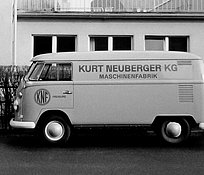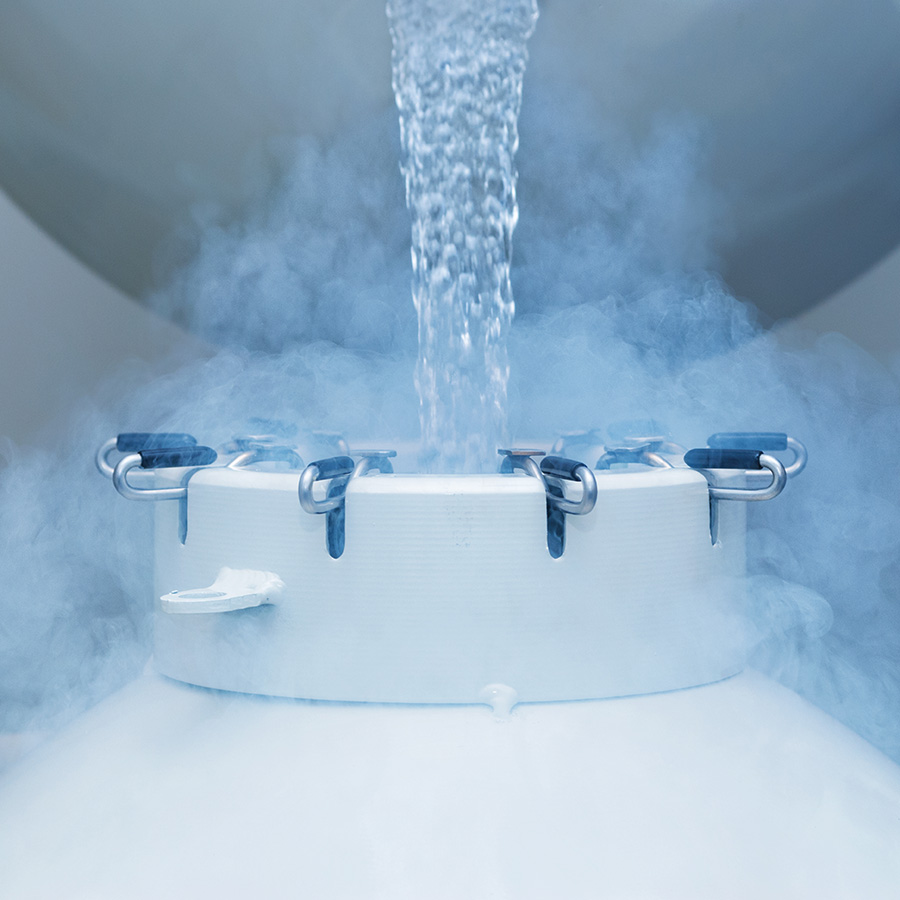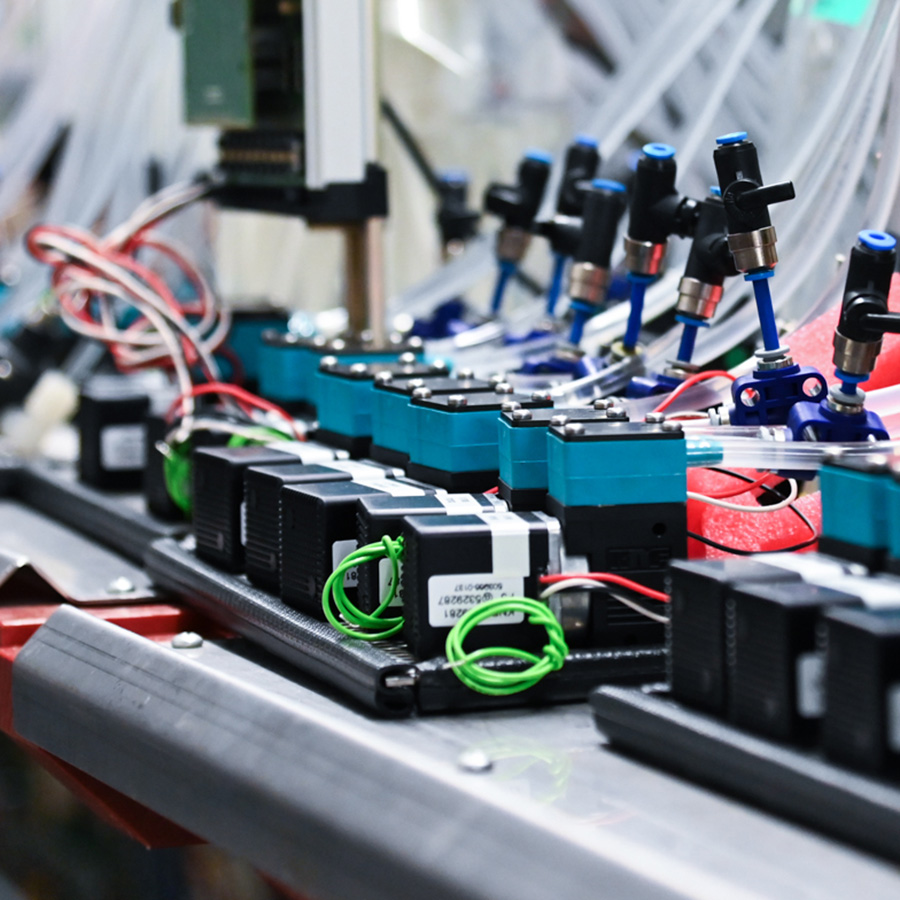
Why KNF Relies on Mass Flowmeters for Routine Testing
Due to the special properties of gases, the performance of a gas pump can be measured by determining its volumetric flow or its mass flow. As described in depth in the blog post "Mass Flow vs Volumetric Flow”, the visualization of gases in volume units seems to be intuitively more comprehensible for many. However, the measurement of mass flows in units such as kilograms per second or grams per minute comes with important advantages.
Quality Assurance by Optimizing Measurements
In order to quantify the volumetric flow of a pump, several approaches for measuring volumetric or mass flows apply, ranging from technically more simple and less expensive to highly sophisticated and more accurate. One of the more basic methods of measuring the volumetric flow is the variable area flow meter, also known as Rotameter. This measurement probe is based on the differential pressure method and is widely used. For routine testing, KNF instead relies on mass flowmeters as a more advanced measuring probe, to determine the overall mass moved by a pump. The mass flow meter is based on the calorimetric, or thermal, measuring principle.
For Volumetric Flow, All Is Needed Is a Tube and a Float
A variety of instruments with quite different measuring methods are available to measure volumetric flow, but it hardly gets any more analog than with variable area flowmeters. In this direct measurement method, a vertically movable float is located in a measuring tube that widens in an upward conical shape. The float gets pushed upwards by the flow that is passing by from below. Depending on the flow’s velocity, it eventually levels, where the acting forces such as buoyancy and gravity are balanced out. Depending on the final height of the float, the result can be read on a scale.
Simpler Is Not Always Better
Variable area flowmeters typically are affordable, easy to set up and require minimal maintenance. However, despite the simplicity of this setup, it is often prone to measurement errors, as the measurement result of the volumetric flow is highly dependent on properties such as temperature or pressure of the media passing by the float. Moreover, varying environmental impacts or flow conditions, as well as the strong movement of the float in oscillating flows, further increase the inaccuracy of the measurement.
Reducing Measurement Uncertainty by Determining the Mass Flow
Reliable routine tests require measurement accuracy that is hard to achieve with variable area flowmeters because they, among other factors, produce the aforementioned environmentally induced measurement deviations. For a reliable and consistent quality control performed on gas pumps, KNF is therefore focusing on measuring their mass flow with a mass flowmeter. A quality step that KNF deliberately opted for.
The mass flowmeters used at KNF are particularly suitable for measuring the pulsating gas flows of diaphragm pumps. A heat-generating resistor in the system transfers heat to the gas flowing by, which causes the resistor to cool down. The higher the mass flow, the greater the cooling effect of the passing gas. Another identical resistor downstream again transfers heat to the gas. Now, the more heat the gas still carries from the first resistor, the less it cools the second one. Since the resistors’ temperatures affect their electrical resistance, a gas flow leads to correspondingly different values. Using a Wheatstone bridge to measure both resistances, the mass flow can now be determined.
Reproducibility Is Key to a Reliable Quality Control
For ongoing routine testing, it is essential that reproducibility is ensured at any time, regardless of environmental or other influences. This allows the results to be comparable and thus significant and reliable. Although both measuring methods require prior calibration, measurements with mass flowmeters used by KNF are less sensitive to pressure and temperature fluctuations of the flowing gas than more commonly used variable area flowmeters. Integrated flow rectifiers and bypasses further ensure standardized flow conditions, making mass flowmeters more robust to oscillating flows.
Since the precise results of standardized measurements performed in accordance with ISO 21360 are output digitally, and it is no longer necessary to read and evaluate a scale manually, reading errors are avoided. The measured values can also be easily processed automatically. Advantages that combine to ensure the highest possible standards for KNF pumps can be always met.
75 Years: KNF Celebrates Company Anniversary
A treasure chest filled with memories, facts and stories. Learn more about KNF’s company history.




